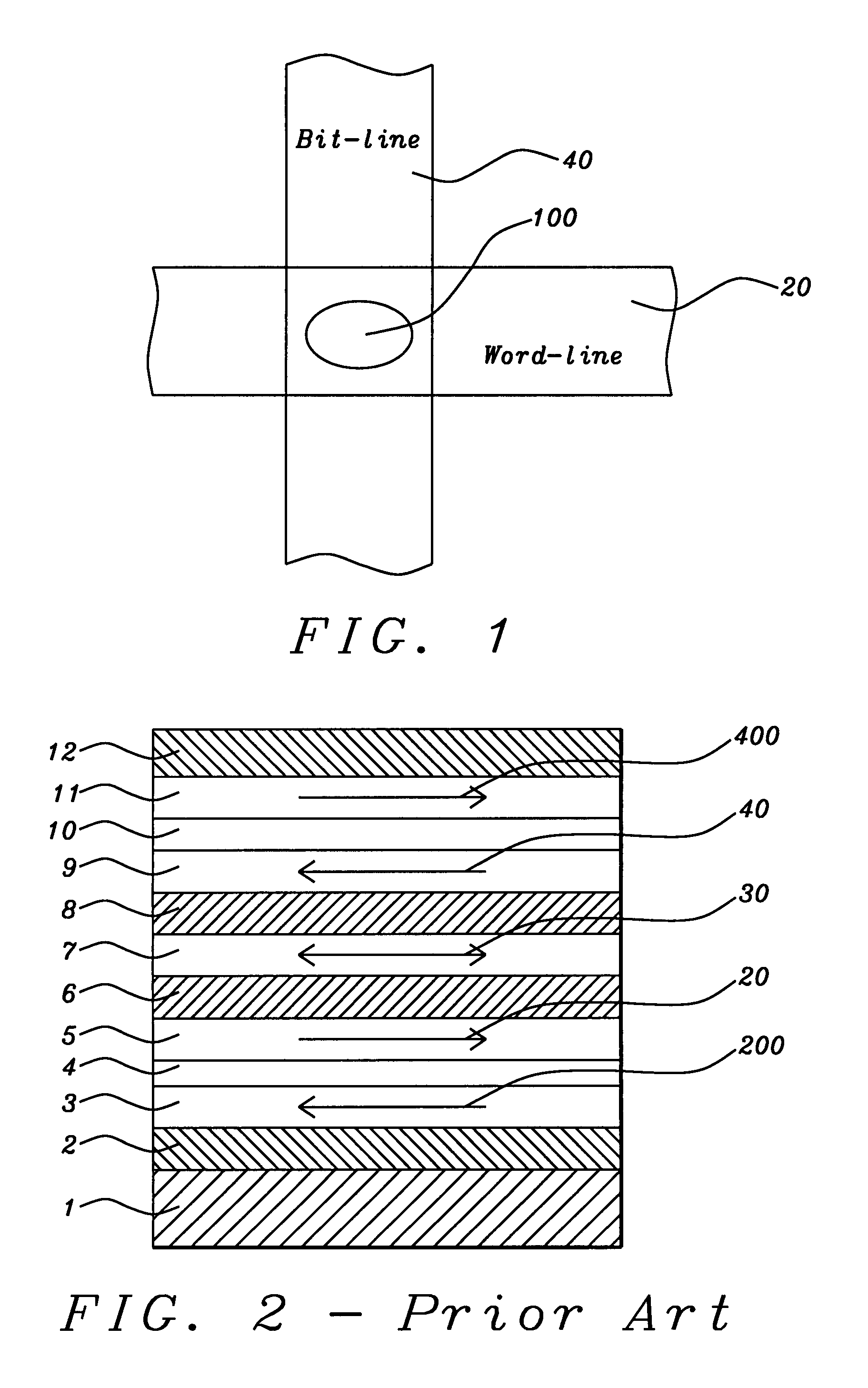Spin transfer MRAM device with novel magnetic synthetic free layer
a magnetic transfer and synthetic free technology, applied in the field of spin transfer mram devices with novel magnetic synthetic free layers, can solve the problems of increasing power consumption, affecting the use of magnetic fields externally generated by current carrying lines to switch the magnetic moment directions, etc., and achieves the effect of minimizing the magnitude of current and zero net magnetic momen
- Summary
- Abstract
- Description
- Claims
- Application Information
AI Technical Summary
Benefits of technology
Problems solved by technology
Method used
Image
Examples
Embodiment Construction
[0026]The preferred embodiment of the present invention is an MRAM device of the spin-transfer variety, having a CPP-MTJ configuration and including a free layer formed as a synthetic anti-ferromagnetically exchange coupled lamination of two ferromagnetic layers (preferably CoFe and CoFeB), then further exchange coupled by parallel magnetization coupling across a very thin layer of Ta, Zr or Hf to yet a third ferromagnetic layer of CoFeB to form a strongly exchange coupled synthetic ferromagnetic configuration. This free layer has a particularly advantageous form for a change in its magnetic moment to be effected by the transfer of spin magnetic moments of conduction electrons both by transmission and reflection.
[0027]Referring to FIG. 3, there is seen a schematic cross-sectional view of the device of the present invention. Looking at the structure from the bottom upward, there is shown the following sequence of layers. Layer (1) is a substrate or underlayer. Layer (2), formed on th...
PUM
 Login to View More
Login to View More Abstract
Description
Claims
Application Information
 Login to View More
Login to View More - R&D
- Intellectual Property
- Life Sciences
- Materials
- Tech Scout
- Unparalleled Data Quality
- Higher Quality Content
- 60% Fewer Hallucinations
Browse by: Latest US Patents, China's latest patents, Technical Efficacy Thesaurus, Application Domain, Technology Topic, Popular Technical Reports.
© 2025 PatSnap. All rights reserved.Legal|Privacy policy|Modern Slavery Act Transparency Statement|Sitemap|About US| Contact US: help@patsnap.com



